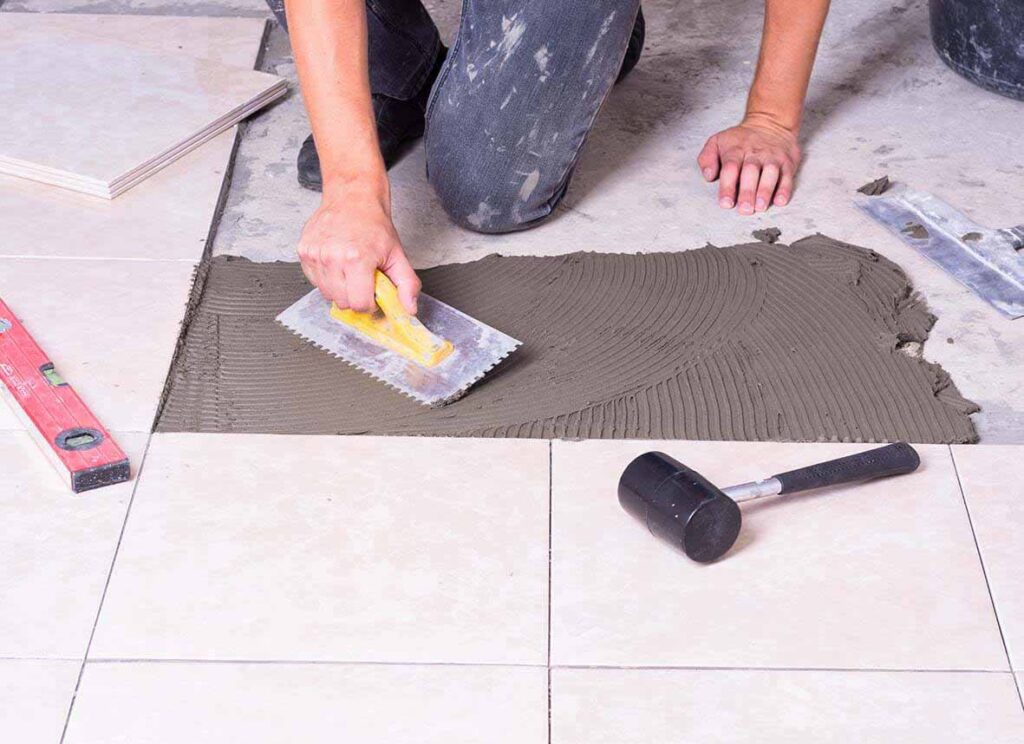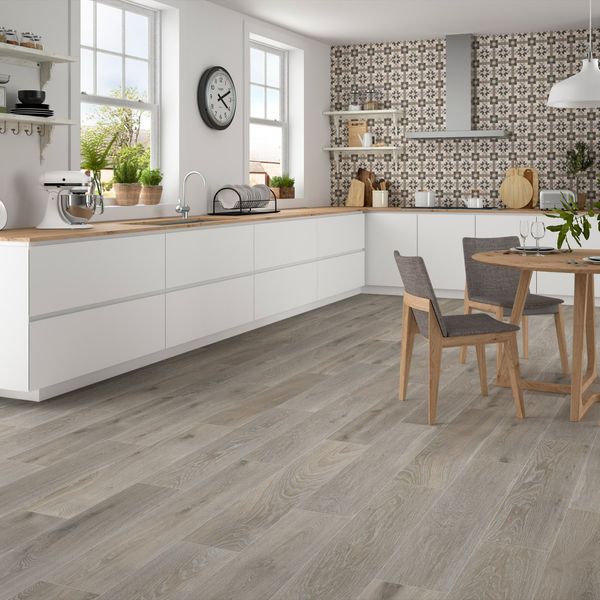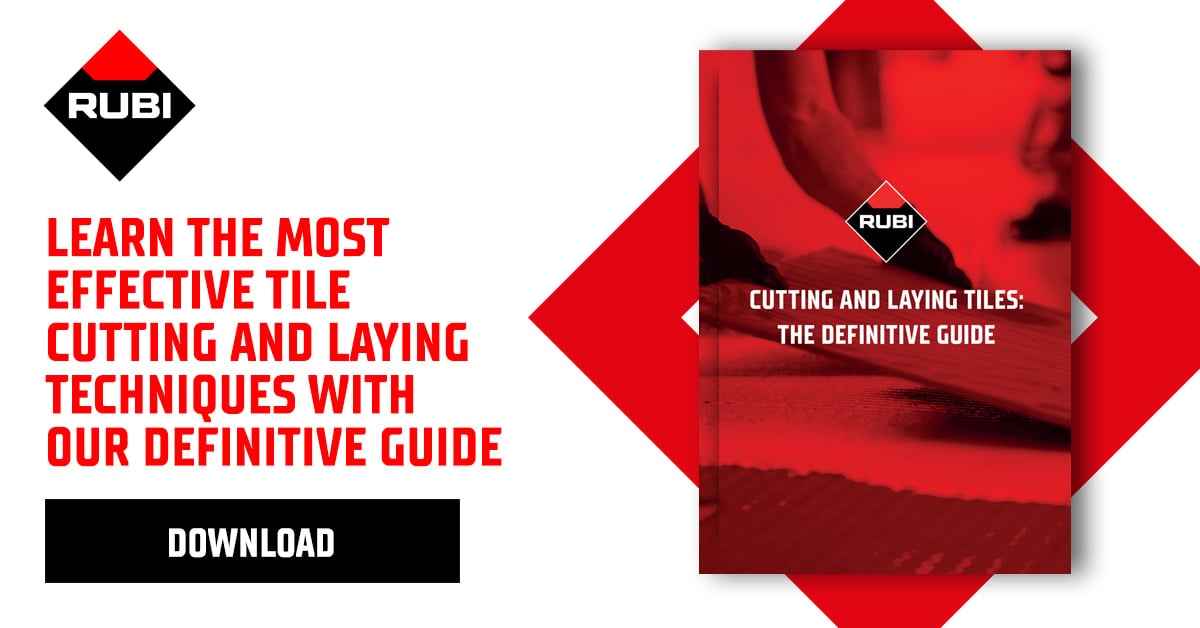Have you stood on a ceramic tile installation and wondered what could lie beneath it? Or better yet, what could go on top of it? We’ll let you in on a secret: you can lay new flooring right over it. Now, the key question is, what type of flooring can you put over ceramic tile?
In this piece, we’re exploring the different materials you can use to cover those existing tiles. And we’re not just talking about any materials – we’re talking about the best, the ones that will give your home that fresh, new look you’ve been dreaming of.
Your floor overhaul journey is just a scroll away. Let’s dive in, shall we?


Understanding Ceramic Tile
Ceramic tiles are a familiar sight in many homes and offices. They have an undeniable charm – sturdy, shiny, and hard – a testament to their endurance.
Made from clay, sand, and water, these tiles are fired in kilns at incredibly high temperatures. The result? A highly durable material that resists wear and tear.
Add to that, ceramic tiles have a special glaze on top, making them resistant to water and stains. This makes them a popular choice for high-traffic, moisture-prone areas like kitchens and bathrooms.
But here’s the thing. Despite their durability, ceramic tiles can fall out of favor. Perhaps the design feels dated, or it no longer aligns with the changing aesthetics of your space. So, you think about an upgrade, but the thought of tearing out the existing tiles seems daunting, time-consuming, and messy.
Well, you’re in luck. Ceramic tiles, with their flat, smooth surface, can serve as an excellent base for other flooring materials. You can keep them right where they are and layer up, breathing new life into your space without the fuss of removal.
Considerations Before Installing Floor Over Tile
Before we get too carried away with the idea of installing new flooring over ceramic tile, we should pause for a moment. Yes, the idea is tempting. However, there are a few things we need to consider to make sure we’re heading in the right direction.
Firstly, the condition of the existing ceramic tiles is crucial. If they’re severely cracked or uneven, laying new flooring on top may not be the best plan. Remember, a smooth, solid base is key for any flooring installation. If the existing tiles aren’t up to par, they might need some repair or leveling before we proceed.
Secondly, we have to think about the height difference the new flooring will create. Will the added height affect door thresholds, kitchen appliances, or furniture? Sometimes, a few extra millimeters can throw off the harmony of a room. So, we have to measure and plan carefully.
Finally, the preparation process cannot be ignored. The ceramic tiles need to be thoroughly cleaned and any wax or sealant removed. Remember, we want our new flooring to adhere properly and last for years.
Getting the basics right saves us from trouble down the line. Now that we’re aware of these considerations, we’re ready to explore the flooring options.

Exploring the World of Over-Tile Flooring
When it comes to covering your ceramic tile, you’re not short on options. Let’s start by looking at a crowd favorite: vinyl.
Vinyl Flooring
Why, you may ask, should we consider vinyl? Well, vinyl flooring has quite a bit going for it.
Firstly, it’s known for its resiliency. Vinyl is tough yet flexible, offering a bit of softness underfoot that you’ll appreciate when you’ve been on your feet all day. Furthermore, vinyl’s water-resistant nature makes it a great candidate for rooms prone to spills and splashes. That’s a big tick in the ‘practicality’ box.
But it’s not all about durability and practicality. Vinyl flooring also offers impressive aesthetic versatility. From mimicking the warmth of wood to the cool elegance of stone, vinyl can do it all without burning a hole in your pocket.
Now, how about installing vinyl over ceramic tiles? Vinyl flooring typically comes in sheets or tiles. With the right preparation and adhesive, it can smoothly adhere to the flat surface of ceramic tiles. However, be mindful of deep grout lines that may telegraph through the vinyl over time.
On the upside, vinyl flooring is relatively easy to install and replace if damaged. The downside? It may not add as much value to your property as other types of flooring, given its lower perceived quality.
However, for a quick, cost-effective, and visually pleasing solution, vinyl flooring might just be the way to go.
Laminate Floors
Laminate floors are essentially composite wood compressed together at high temperatures. A photographic image of hardwood or stone is then placed over the composite wood, and a clear, hard layer is placed on top for protection. The result? A flooring material that convincingly imitates more expensive options without emptying your wallet.
Installing laminate over ceramic tiles is doable, but it requires a bit more preparation. Those grout lines on the ceramic tiles? They need to be leveled off to avoid an uneven surface. Once that’s done, a foam underlay goes on top to provide a smooth base for the laminate.
The pros of laminate flooring include its cost-effectiveness, durability, and ease of installation. Its main drawback is its susceptibility to water damage. Unlike ceramic or vinyl, prolonged exposure to moisture can cause the laminate to warp. Therefore, it’s not the best choice for bathrooms or laundry rooms.
Engineered Wood Flooring
Stepping up on the luxury ladder, we come to engineered wood flooring. This option combines the best of both worlds: the elegance of real wood and the practicality of man-made materials.
Engineered wood flooring consists of a real hardwood veneer attached to multiple layers of other wood types, like plywood. This structure gives the flooring enhanced stability and resistance to changes in temperature and humidity compared to solid hardwood.
When it comes to installing engineered wood over ceramic tiles, an underlayment is necessary to even out the surface and provide a cushioning effect. Then, the planks can either be glued down or floated over the tiles.
The allure of engineered wood flooring lies in its aesthetic appeal. It offers the warmth and charm of real wood, enhancing the sophistication of your space. On the flip side, it is pricier than vinyl or laminate and may require professional installation to ensure optimal results.
The verdict? If budget isn’t a constraint and you’re after an upmarket look, engineered wood could be your pick.

Other Flooring Options
While vinyl, laminate, and engineered wood are common picks, they’re not the only game in town. There are a couple more players on the bench worth a look.
Starting off, we have carpet tiles. Carpet tiles offer a warm, cozy feel underfoot that’s hard to beat. They come in a variety of styles and colors, making it easy to customize the look to match your decor.
Installation over ceramic tile is fairly straightforward. Each tile has an adhesive back that sticks right to the tile. Just be sure to clean and dry the tiles thoroughly before starting. And yes, as with other options, level those grout lines first!
Another contender is linoleum. Often confused with vinyl, linoleum is a natural product made from linseed oil, cork dust, and other organic materials. It’s eco-friendly, biodegradable, and has antimicrobial properties.
Like vinyl, it’s water-resistant and durable. Installing linoleum over ceramic tiles requires an adhesive, and yes, it can handle those pesky grout lines without a hitch.
Bear in mind, every flooring option comes with its set of pros and cons. The key is to assess your specific needs, budget, and aesthetics before making a choice.
Installation Process and Importance of Underlay or Insulation
Now that we’ve explored the different flooring options, let’s take a closer look at the installation process over ceramic tiles. Whether you choose vinyl, laminate, engineered wood, or any other type of flooring, there’s one important consideration to keep in mind: the inclusion of underlay or insulation.
To Insulate or Not to Insulate
Adding a layer of underlay or insulation when installing new flooring over ceramic tiles is highly beneficial. Not only does it help to prevent the appearance of deep grout lines, ensuring a smooth and even surface, but it also provides valuable insulation.
This additional layer helps to keep your floor warmer for longer and contributes to a more comfortable living space.
The Installation Process
The installation process typically involves a thorough cleaning of the ceramic tiles, leveling grout lines if necessary, and then applying an adhesive or underlayment. New flooring is then laid according to the manufacturer’s instructions.
It’s important to note that for certain types of flooring, professional installation might be recommended to ensure optimal results.
By following these steps and including underlay or insulation, you can achieve a seamless, visually appealing, and comfortable flooring transformation.
So, What Type of Flooring Can You Put Over Ceramic Tile?
The answer: plenty! From vinyl and laminate to engineered wood and beyond, the choices are abundant. The key is understanding the pros and cons of each option and considering the practicalities of your space, budget, and taste.
So, now that you know the answer to the question “What type of flooring can you put over ceramic tile?”, give it some thought, make your pick, and transform your space into something you’ll love. After all, our surroundings impact our lives in more ways than we often realize.
If you’re interested to hear about how we can help bring your vision to life, get in touch!



Post a comment